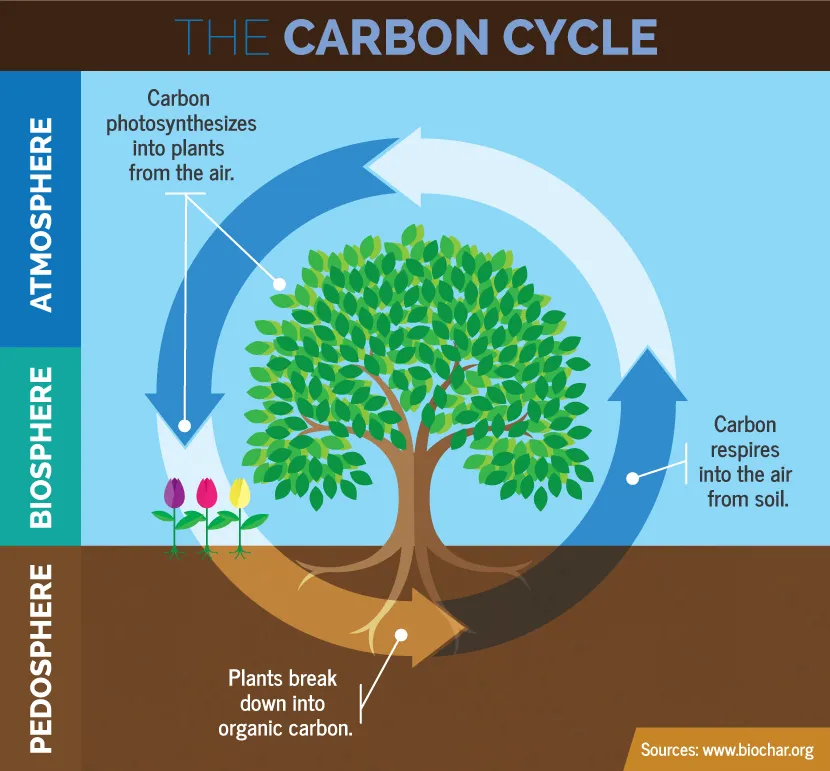Putting Carbon Back into Your Soil

Looking for ways you can help combat climate change? Start with sequestering carbon in your own backyard. Sound challenging? It’s not! Sequestering carbon is about using plants to absorb carbon dioxide from the air and locking it into the soil. Here are some things you can do:
Maintain healthy soil
Improved soil health and structure will increase carbon in the soil.
Keep soil covered
Bare soil is vulnerable to erosion, weeds, and carbon loss. During the growing season, cover soil with plants or organic mulch. In the off-season, plant a cover crop to nurture the soil ecosystem.
Leave the soil alone
Rototilling, or even digging with a spade or garden fork exposes soil microbes to excess oxygen and sunlight. It speeds up the loss of stored carbon to the atmosphere. Instead, use organic mulches to prepare planting beds. Feed the soil organisms that nourish your plants.
Grow different types of plants
Any kind is good for the environment as they absorb carbon dioxide and produce oxygen. If you grow some of your own food, you can reduce fossil fuels used for food transportation.
Plant trees and shrubs
They absorb more carbon dioxide with their larger size, and they live longer. Well placed shade trees can also cut energy use in the summer.
Compost your green waste
Create your own organic fertilizer using dead grass, plants, leaves, wood clippings, and kitchen scraps. You’ll also reduce methane emissions from landfills by processing green waste at home.
Kick the chemicals
Synthetic fertilizers, weed-killers and other pesticides can have negative effects on life in the soil. Synthetic fertilizers, particularly nitrogen-rich ones, require fossil fuel energy to manufacture and release greenhouse gasses as they’re produced.
> BACK TO BASICS
> SOIL
> What is Healthy Soil
> Get to Know Your Soil
> Keep Your Soil Healthy
> Common Soil Problems
> Avoid Disturbing Your Soil
